Madagascar is definitely a destination that should be on your bucketlist, but also one that you should be well prepared for. I’ve already gotten a lot of questions ranging from vaccines to drone regulations, so I’m going to go through them all to help you prepare!
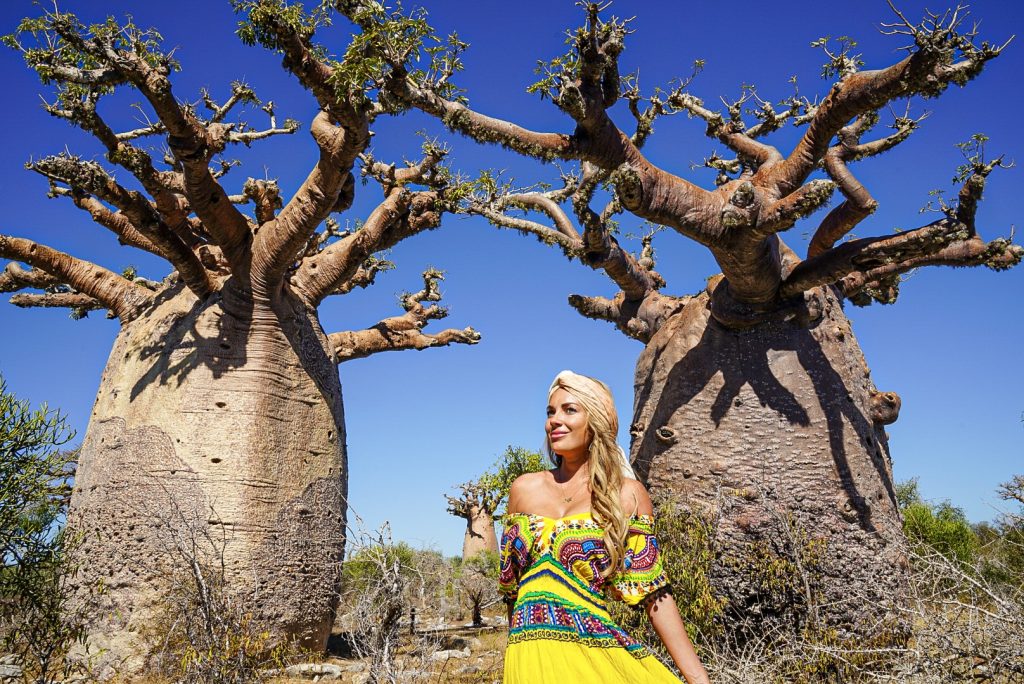
I will definitely disclose up front that we were told by the local guides and hotel several times that it can be dangerous, so keep that in mind. In fact they straight up told us not to go out in the main city of Antananarivo after 5pm, and that we would not be driving anywhere at night time during our tour!
That being said, I would highly recommend doing a planned tour with a local guide in Madagascar rather than trying to do it yourself.
Before you get all this amazing free info, please consider using my affiliate links below to book your trip! It costs you nothing and I get a small referral which is what helps my blog running! Thank you!
- Flights: Use Skyscanner for cheapest comparisons
- Travel Insurance: HIGHLY recommended! I use Travelex or World Nomads
- Travel Credit Cards: Best Travel Cards for Points
Also don’t forget that if you need any travel gear or clothes like I wear, to click the SHOP tab on the menu above!
Here’s the most essential Madagascar travel tips you need to know:
Jump To:
Where is Madagascar?

Madagascar is actually a massive island-country off the east coast of southern Africa. You may think it looks small, especially since it’s an island, but it’s actually 40% bigger than California!
If you can imagine this; it was once attached to India! Then broke off and drifted closer to Africa!
How Do You Get to Madagascar?
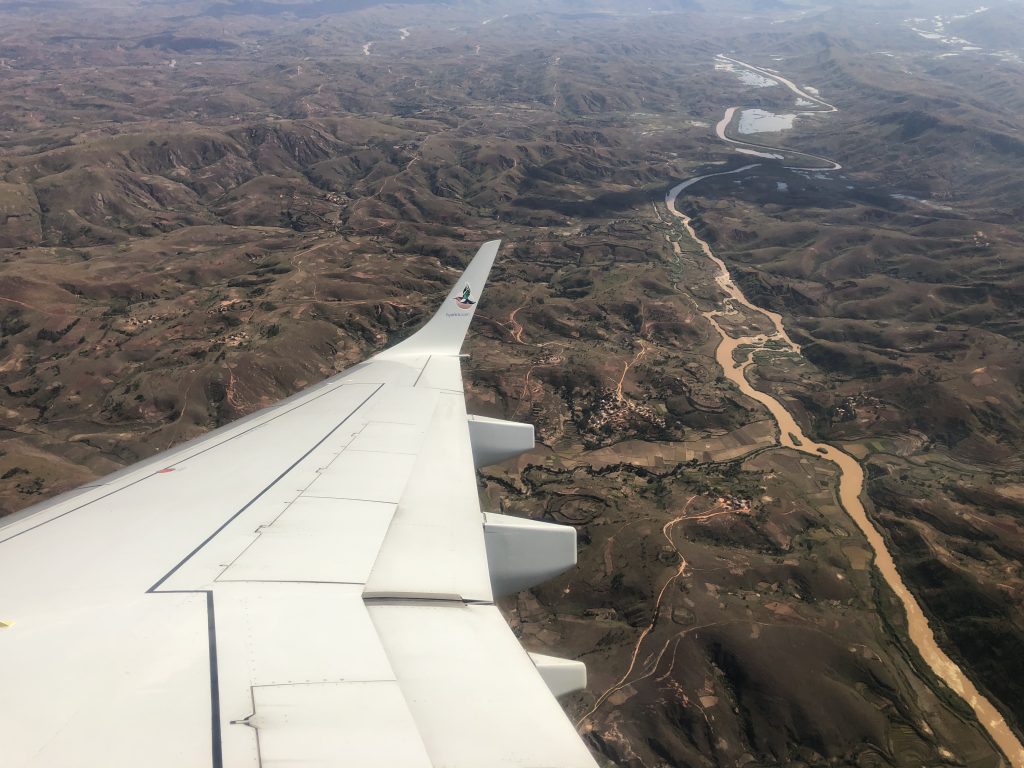
Some people will be starting at or only going to Madagascar, so it will depend where you’re coming from. But it will likely take a couple connections no matter what.
Coming directly from the U.S. you can get one stop-over flights (or more for a cheaper price), and if you’re already in Africa, you’ll likely layover in South Africa.
If you want to try your luck hacking the cheapest flights, try playing my game of Flight Roulette by using flexible options! Don’t let extremely long flight journey times scare you off right away — many of them are long layovers, which means you can potentially sneak in an extra mini trip somewhere!
I stayed overnight in Abu Dhabi during my flight route to Madagascar! If you have a long layover, check out how to get free airports and shuttles to the famous mosque in my blog post!
How Many Days Should You Spend There?

Naively I assumed one week would be enough time to see my bucketlist marks when I was booking my flights, but I’m going to go ahead and say I was wrong. I underestimated how enormous the country is and how spread out the best things to do are!
Even the majority of tours available in Madagascar start at 10 days minimum! So I would suggest around 2 weeks if you can; the more the better, and if you are on a tight crunch for time, you can swing 8 days like I did.
What Are the Best Areas to See in Madagascar?
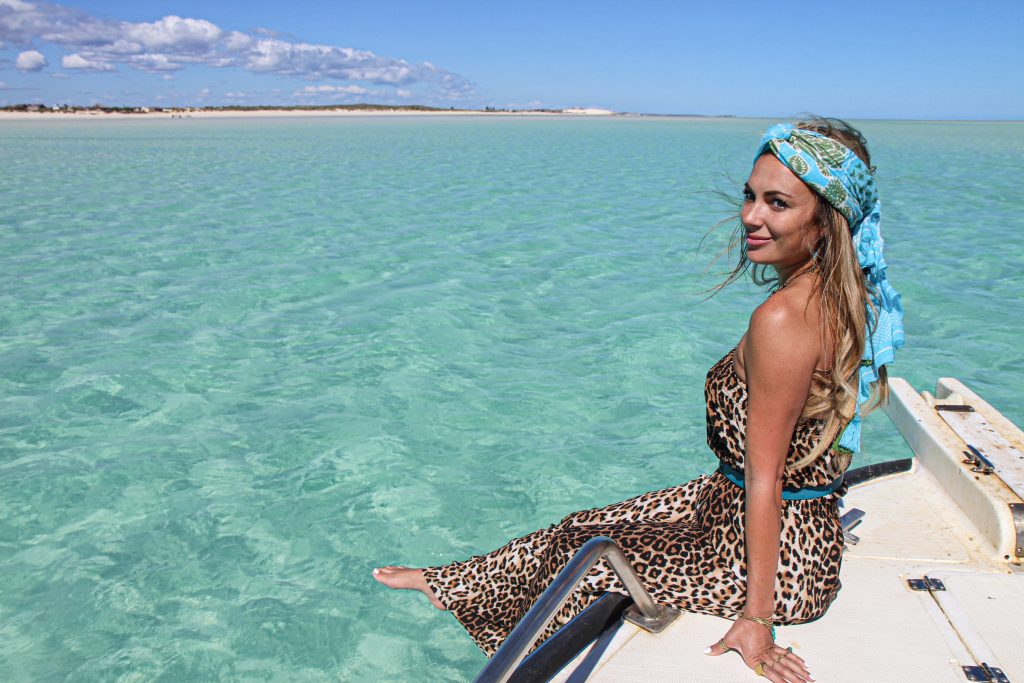
There’s a lot of different areas with different things to see in Madagascar, but as I mentioned, they are very spread out. One of the main tourist attractions is Baobab Alley in the West, which is either a 6 hour drive, or 1 hour (pricey and limited) flight from the main city you fly into.
Then there’s the other popular tourist location, especially those looking for a tropical vacation: Nosy Be. It’s a small island off the North-West coast and definitely requires a flight unless you are doing a driving tour up the country!
Where I went was the South-West, where the non-touristy areas are that you can see Baobab forests, wild lemurs, beautiful beaches, and one of the last completely indigenous, non-modernized tribes left in the country. If you want a truly off the beaten path adventure, I’d definitely opt for this area!Potential Safety Hazards for Travelers
Current Dangers and Safety Hazards in Madagascar
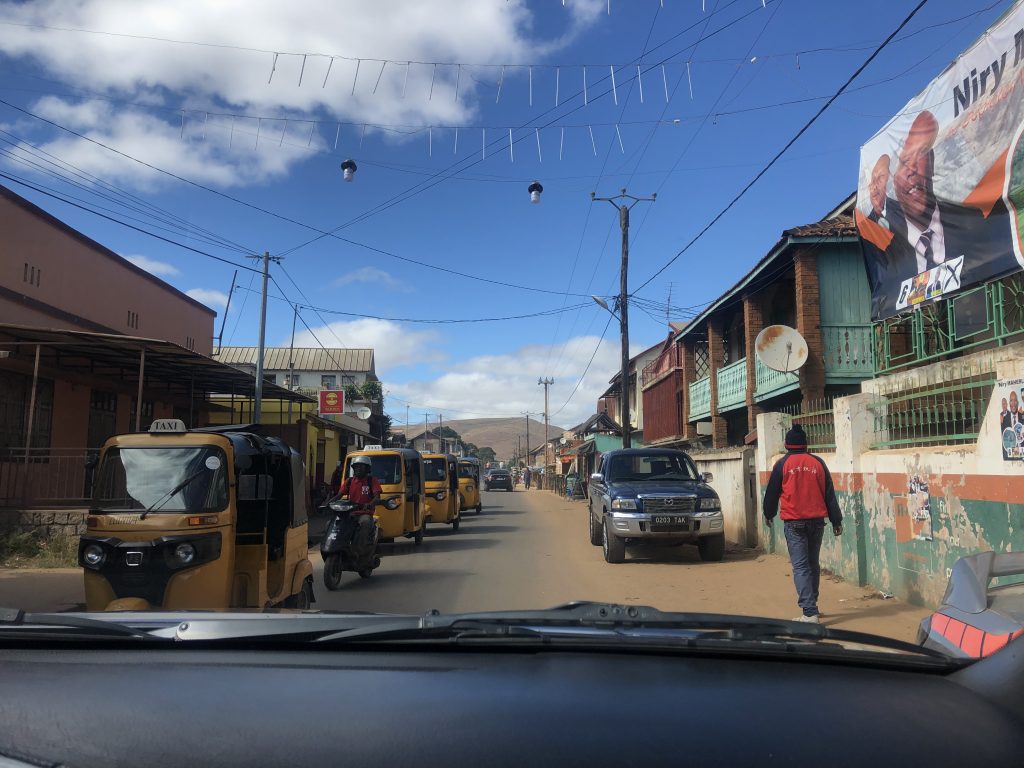
As I mentioned in the intro, we were immediately warned several times about the dangers of Madagascar. Typically I try not to listen to stereotypes before I get to a country, and I didn’t in this case…until I got there and the tour guide said it himself.
He said the main city of Antananarivo is the most dangerous (as are most main cities), due to political unrest. There are many criminals and even gangs, due to the extreme poverty, so crimes like theft are prevalent, especially at night. For this reason, I highly do not recommend going to Madagascar alone, or even walking around Antananarivo.
Driving at night is also highly not recommended; both because of theft, including car jacking, and because of the amount of people who walk on the roads when it’s cooler.
Aside from crime, there are also health safety hazards to be aware about. When I went in 2019, there was a legit plague, and also a measles outbreak. It’s always a good idea to do a quick google search of current health and safety hazards about a month before you go, in case you need to get any vaccinations!
Tips for Taking Safety Pre-Cautions
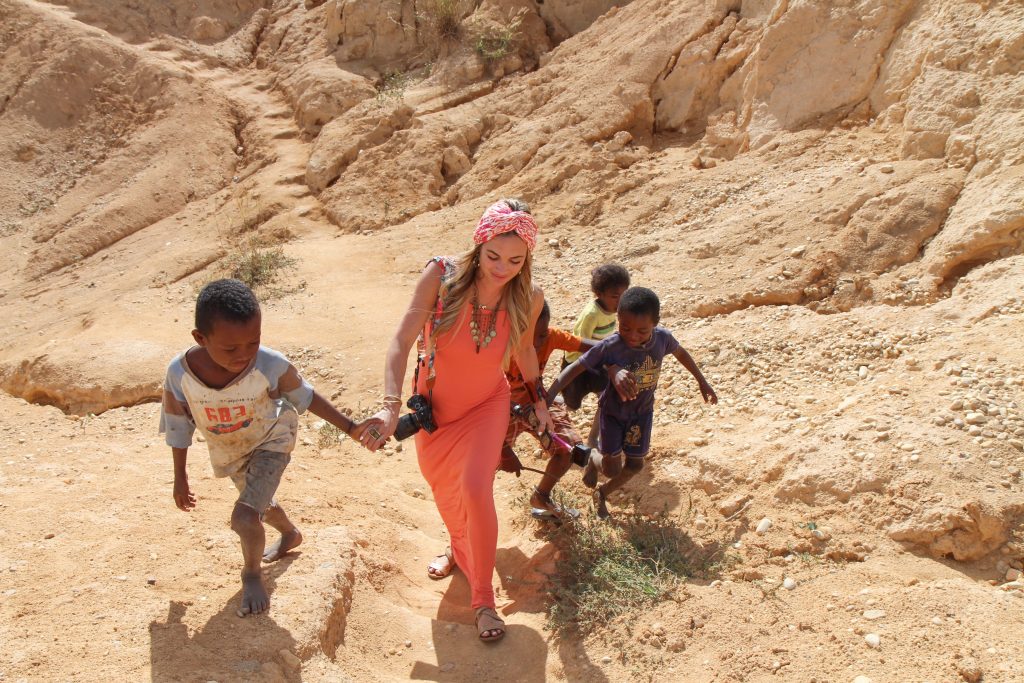
So now you know that there’s potential crime and safety hazards in Madagascar, but don’t let that deter you from going! These things exist in every country, so it’s more logical to simply take precautions and be vigilant rather than not go!
Here’s some of my top safety precaution tips for Madagascar:
- – Look up current political and health advisories
- – Get required and recommended vaccines (see below)
- – Pack over-the counter meds (I bring antacid, ibuprofen, charcoal tablets, and diphenhydramine)
- – Don’t bring or wear expensive jewelry or clothing
- – Don’t walk with your camera/phones out in cities
- – Keep your bag/purse closed and zippered at all times
- – Don’t carry all your cash on you — take small amounts at a time and hide the rest in various places
- – Get travel insurance in case of an accident or trip interruption (See why I ALWAYS get it here)
- – Get a Travel Safety app like CloseCircles that can track your location, send travel alerts, and has 24/7 emergency assistance.
- – Wear bug spray at all times
All About Sapphires
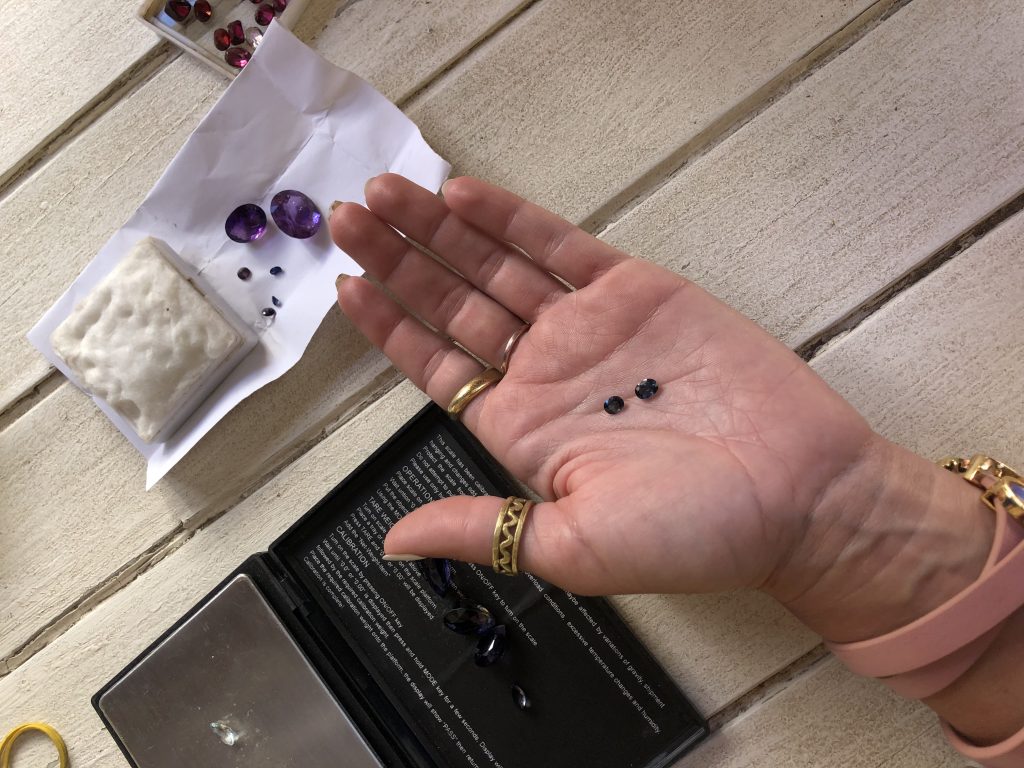
The past and current situation surrounding sapphire mining in Madagascar is atrocious. In short, once sapphires were found, wealthy foreigners flocked to Madagascar and destroyed natural habitats (killing almost all of the lemurs), which paying locals hardly anything to do grueling, dangerous work.
Then they had the audacity to build nice shops for foreigners to come buy their high priced sapphires, profiting greatly while the people of the country live in poverty. For his reason, I highly recommend that you DO NOT buy sapphires from any of the tourist shops.
If you are absolutely determined to buy sapphires, I would recommend asking your tour guide if they can try to find some on the black market sold by locals. Just be extremely careful, because if you get caught, it could be dangerous.
Read more about my sapphire experience in Madagascar below:
Visa and Entry Requirements for Madagascar
You can get a visa upon arrival in Madagascar and it doesn’t require much. You fill out three small pages of information about where you’re staying, how long, and some health questions and that’s it. If you’re coming from a Yellow Fever country, you will have to show your Yellow Fever vaccine card.
The visa fee is $37 or 30 Euros, and you can pay with either currency. That being said…make sure you take out USD or Euros to pay for visa fees before you leave home!
You’ll also need 4 blank passport pages available even though they’ll only take up one with the visa sticker and stamps.
Be prepared to go through three lines when you arrive in Madagascar;
- 1. Initial collection of your paperwork
- 2. Payment for Visa
- 3. Immigration
Required and Recommended Vaccines
Yellow Fever: As I mentioned above, if you’re coming from a country with Yellow Fever, you’ll be required to have a Yellow Fever vaccine and show proof of it. Definitely keep that in mind if you have or are planning a layover somewhere like Kenya or Tanzania before you head to Madagascar!
One time I stopped in Kenya to do a safari before climbing Mt. Kilimanjaro in Tanzania, and was stopped at the airport for not having a Yellow Fever card, and had to get the vaccine AT the airport!
Measles: The measles outbreak isn’t too prevalent now, but the health advisory is recommending you get the measles vaccine if you don’t already have it, and you are worried about contracting it.
Hep A and Typhoid: Usually recommended for all travel to Africa but it is not required.
Malaria Pills: I personally refuse to take them because they’re supposed to make you a bit out of it, but if you’re seriously worried about it take them as a precaution. I’ve been to the top Malaria infested countries in the world and have been fine with just a ton of bugspray.
Is it Safe to Drink the Water/Eat the Food
Do not drink the water and try to be careful of foods that are washed in it. Buy one big jug of water at a local supermarket if you can and refill a reusable water bottle to cut back on plastic waste.
Food is safe but always be careful with street food and again, foods washed in tap water. Also don’t eat too much of something you haven’t eaten before in a while because your body may not be able to digest it properly. I would never eat either of these but namely Zebu (a humped cow) and foi gras.
Cellular, Data, and Wifi
Since you’ll likely be going on long car/bus rides, I would highly recommend getting a local SIM card from the airport to stay connected with data. Yes, I know SIM cards sound confusing and inconvenient to program, but it literally takes two seconds since the kiosk workers do it for you, and doesn’t cost that much.
There’s a couple different companies like Orange, Airtel, and a local one called Telem; they all offer the same connectivity, but Telem is cheapest.
Telem costed about $20 for 6 GB of data versus Orange’s $30 for 5GB. You can find all the SIM card kiosks after you exit the baggage claim area, and you’ll need local cash to purchase them and the data (there’s ATMs there too).
How many GB’s you’ll need depends on how much you use your phone. For me, who works from my phone a lot, 6GB is enough for about a week. You could definitely go with less but again, it’s not that expensive and always nice not having to worry about losing service or finding Wifi.
If you’ve never used a SIM before, read my extremely easy guide to How to Use an International SIM Card.
Many people will opt to use their U.S. carrier’s international data plan because they don’t want to “deal with” SIM cards, but that’s a load of crap. It’s usually $10/day, which means you’ll be paying $50 more for one week of service than you would by just getting a local SIM.
If you really don’t want to do the local SIM, OR you can’t because your phone isn’t unlocked, I’d recommend buying or renting a Wifi hotspot over using your carrier’s international plan!
Another option that’s easier but also expensive, is using an eSIM (if your phone is unlocked). I just checked the rates though and it’s $8 for 1 GB for 7 days, which is pretty expensive considering I can use up 1 GB in a few hours. But if you just want some connection to check in with your family, this is a good option.
More info about eSIMs below!
Currency Exchange, Cash, and Credit Cards
Local Currency: Malagasy Ariary (MGA)
Exchange rate: $1USD = 3,630 MGA
As i mentioned, there are a couple ATMs after baggage claim, and also a currency exchange. I know that the ATM didn’t charge a foreign transaction fee on my Visa debit card, so that was a good and easy option.There’s also banks/ATMs in town in Antananarivo but it’s probably safer to get cash out at the airport.
PRO TIP: Make sure you turn your travel notice on for your debit card before you arrive so that your bank doesn’t flag your transactions as fraud.
I usually never bring USD to exchange for local currency because they typically charge a fee, so I can’t really advise on that one, but if you feel more comfortable doing that than using a debit card, go for it.I do however always bring a backup stash of at least $100USD cash for visa fees, and in case my cards get stolen.
Cash VS Credit Cards in Madagascar
You will primarily need to use cash in Madagascar, so make sure you get enough out for your entire trip! You can always exchange back what you don’t need when you leave.
Credit cards are mostly only accepted at some of the nicer hotels, so don’t rely on using them here. Although you won’t be able to use a credit card much, I’d still recommend the Chase Sapphire Reserve because their customer service and fraud control is on point.
Not to mention, it includes a Priority Pass for airport lounge access, your TSA Precheck fees, a $300/year travel credit, and 3x points on travel purchases. I actually used points just from my Chase Sapphire card to book my flight home from the Seychelles to LA, which would have bee $1200!
How Much Cash Should You Take Out?
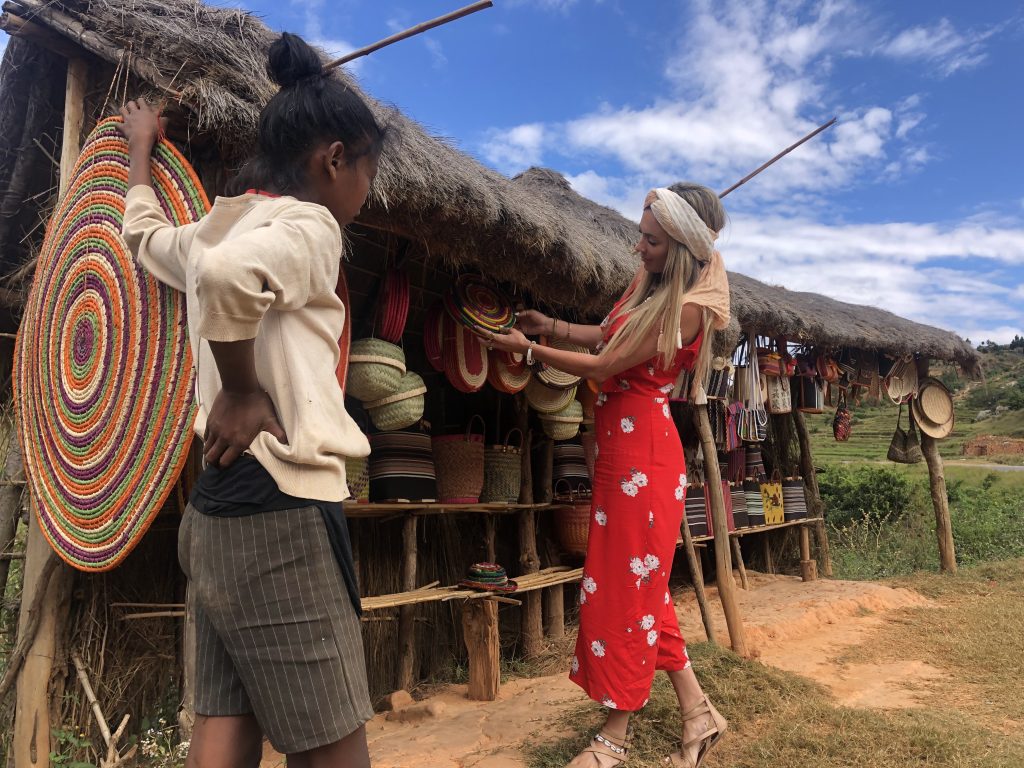
This depends on where you’re planning on staying, how much you eat/drink, and how much you’re planning on buying.
If you’re taking a tour like I did where all the accommodations, transportations, some foods, etc. are included, you don’t need to take out as much. But if you’re not, you’re going to have to take out enough to cover those things, which can be a pain because their bills are mostly in 20,000’s and 10,000’s. AKA you’re going to look like a baller…which isn’t exactly a good look safety-wise.
Food is not expensive, probably around $5-10 per meal, and souvenirs are around the same price unless you’re good at bargaining. I took out about $200USD for the week for food and souvenirs.
Population, Religion, Language and Ethnicity in Madagascar
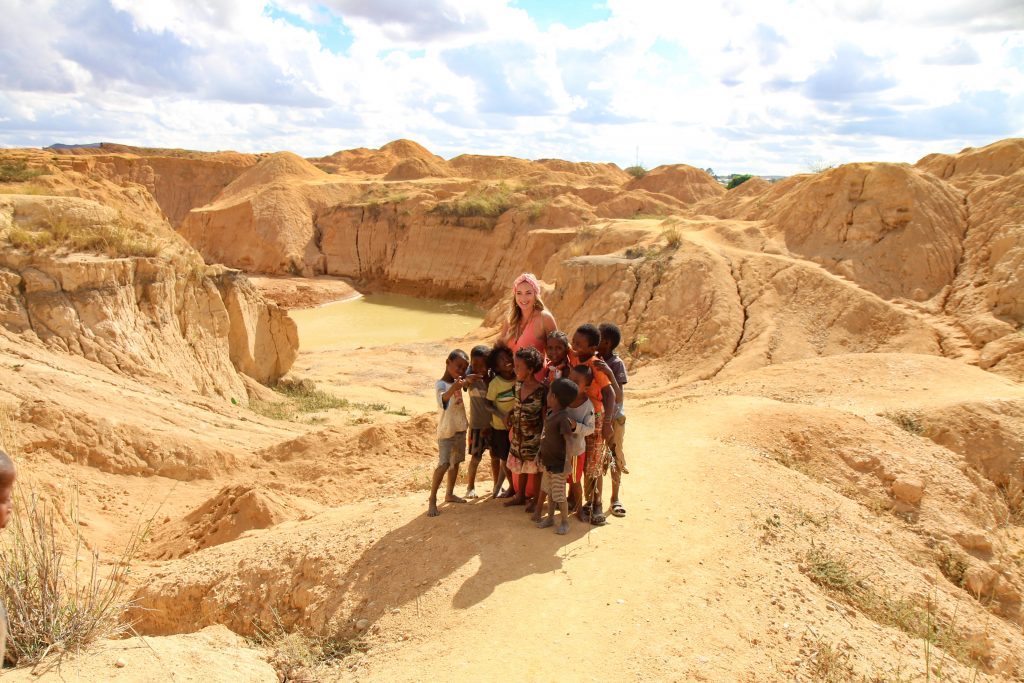
Total Population: Around 29 million
Religion: Mostly Catholic
Languages: French, Malagasy, some English
Ethnicities: Malagasy
Government and Political Issues
Government Type: Semi-Republic (president and prime minister)
Current Leader: President Andry Rajoelina
Political Issues: There is ongoing political unrest due to corruption, and opposition to the growing cost of living prices.
Poverty: Madagascar is sadly an extremely impoverished country in all areas. I was told that only about 10% of people are considered “rich” and the remaining 90% are “poor”. It is evident to see this as soon as you start driving from the airport to Antananarivo as you pass the many people walking and selling items like bricks on the side of the road. This is also why there is so much crime and corruption.
Outside of Antananarivo, poverty is still very evident, but the people in smaller villages live a more simple life with many people farming.
Getting Around Madagascar
Once again, I would highly recommend doing a tour of Madagascar that already includes a vehicle and driver. There is an option to rent a car with a driver but without a guide, but I wouldn’t recommend it for safety reasons.
Bucketlist Things to See in Madagascar
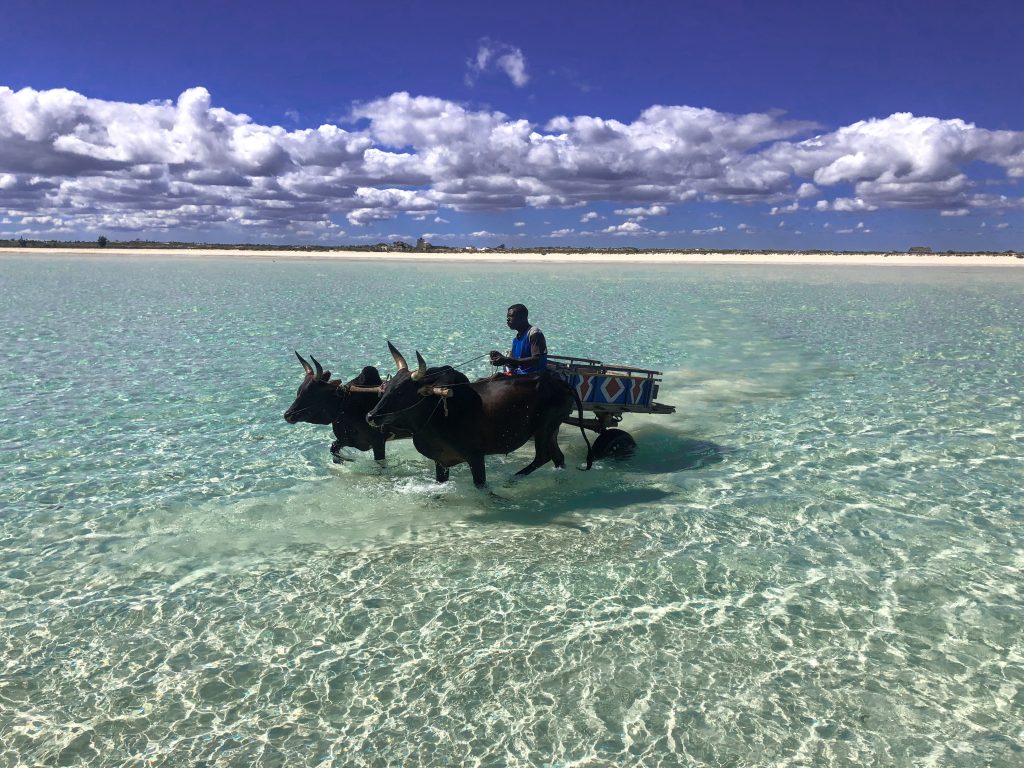
I’m sure there’s already a few things you’re dying to see in Madagascar, like lemurs and Baobab trees, but here’s a few more! You can also check out my Travel Stories for what it was like day to day in Madagascar!
- Baobab Forest
- All the Lemurs
- Sapphires and Natural Stones
- White Sand Beaches
- Local Boat Rides
Please don’t forget! I work extremely hard to produce these free travel guides and posts! If it helped you, or you enjoyed it, PLEASE give it a share on social media, and follow me to keep up with more posts! You’re two minutes of effort truly helps keep my business running! Thank ya!
xx, Alyssa


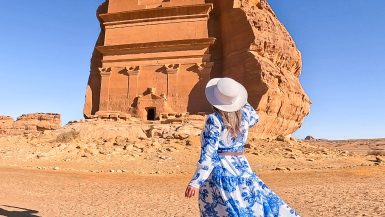
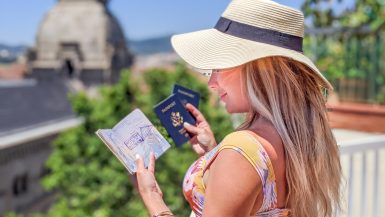

Wow, this Ultimate Madagascar Travel Guide is a treasure trove of insights! The tips provided here are pure gold for anyone planning a memorable trip. As a fellow travel enthusiast, I appreciate the effort put into this blog. Can’t wait to explore Madagascar armed with these valuable recommendations!